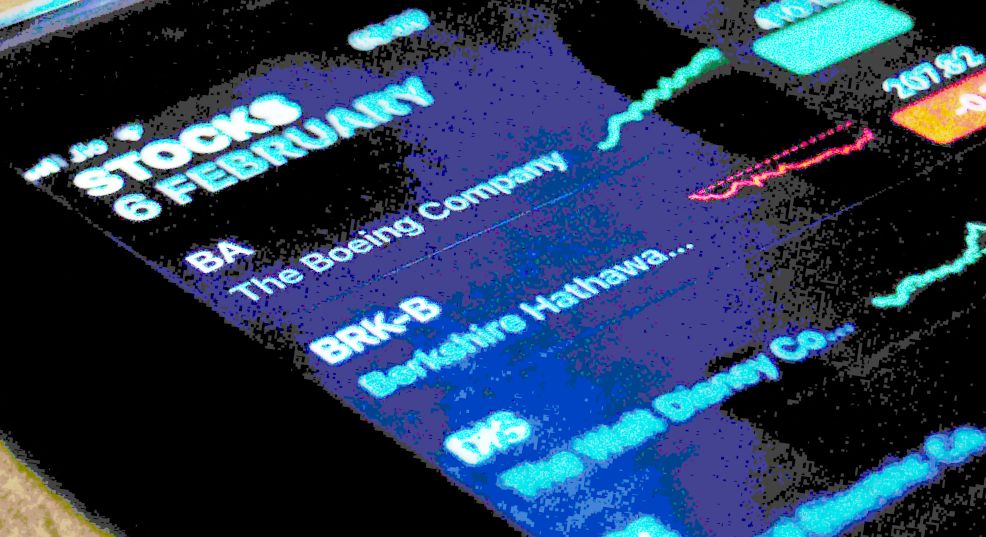What is the difference between bonds and stocks? Why do people say that trading bonds is more difficult than stocks? Leave a comment
Contents
Chizoba Morah is a business owner, accountant, and recruiter, with 10+ years of experience in bookkeeping and tax preparation. For example, a 10-year treasury bond might have a par value of $10,000 and a 2% coupon. When you buy a stock, you’re essentially buying a tiny slice of a corporation.
In the case of bonds, selling early at the wrong time risks the loss of value and the forgoing of future interest payments. Bonds, on the other hand, are more susceptible to risks such as inflation and interest rates. If interest rates are high and you need to sell your bond before it matures, you may end up getting less than the purchase price. If you buy a bond from a company that isn’t financially sound, you’re opening yourself up to credit risk.
- When you purchase a stock, you’re buying an actual share of the company.
- When you buy a stock, you become a part-owner of the business.
- Owners of preferred stock also have a higher claim on the company’s assets than common shareholders if the company goes bankrupt.
Generally, preferred stocks are rated two notches below bonds; this lower rating, which means higher risk, reflects their lower claim on the assets of the company. CDs are the ultimate safe-haven investments because the money is insured up to $250,000. High-quality, highly rated corporate bonds are effectively safe from all but catastrophe. A crucial difference between CDs and bonds lies in how they react to increased interest rates. That means that a bond will lose market value if interest rates rise. That is, if you sold the bond on the secondary market, it would go for less because other bonds would be available that pay a higher rate of return.
CDs vs. Bonds: What’s the Difference?
However, they also tend to provide superior long-term returns. Stocks are favored by those with a long-term investment horizon and a tolerance for short-term https://traderoom.info/ risk. Resembles bonds even more, and is considered a fixed-income investment that’s generally riskier than bonds, but less risky than common stock.
Stocks are known for being volatile in the short term, but over the long term, they’ve historically generated higher returns than bonds. Since 1926, stocks have grown by an average of 10% per year, while bonds have grown by an average of only 5% to 6% per year, according to Morningstar. The financial asset which holds ownership rights, issued by the company is known as Stocks.
The Prominent U.S. Stock Exchanges
This regulation not only helps investors, but also the corporations whose securities are being traded. The economy thrives when the stock market maintains its robustness and overall health. Owners of preferred stock also have a higher claim on the company’s assets than common shareholders if the company goes bankrupt. Both stocks and funds can return money to investors through dividend payments, which are usually paid out quarterly.

But stocks and bonds are two very different things that serve different purposes in a diversified investment portfolio. A stock is a financial instrument issued by a company depicting the right of ownership in return for funds provided as equity. A bond is a financial instrument issued for raising an additional amount of capital. These are issued by government agencies and private organizations offering periodic interest payments and principal repayment after the duration. Bonds lack the powerful long-term return potential of stocks, but they are preferred by investors who want to increase their income.
Key Differences
This information may be different than what you see when you visit a financial institution, service provider or specific product’s site. All financial products, shopping products and services are presented without warranty. When evaluating offers, please review the financial institution’s Terms and Conditions.
Sign up and we’ll send you Nerdy articles about the money topics that matter most to you along with other ways to help you get more from your money. He has covered financial topics as an editor for more than a decade.

Over the next 15 years, Rainforest becomes a household name that does billions of dollars’ worth of business each year. However, it’s also possible that the stock price could drop below what you paid. Or that the company you invest in will go bankrupt in a year and you’ll walk away with nothing. The founder can also raise the funds through a stock by issuing 40 shares web app development cost in 2021 to himself and selling 10 shares to other people for $1,000. Therefore, the 10 shares sold will be entitled to 20% of the future earnings (10 shares issued / 50 shares total). Secondary MarketA secondary market is a platform where investors can easily buy or sell securities once issued by the original issuer, be it a bank, corporation, or government entity.
No investment strategy can guarantee a profit or protect against loss. Overall, bonds tend to be lower-risk investments than stocks and often they offer a higher interest rate than you could get by putting your money in the bank. The drawback is that they are low-reward, and interest payments may only keep up with inflation. They are also often more expensive than stocks, as most bonds are sold in increments of $1,000, so there is a higher barrier to entry. Lower-rated bonds, like junk bonds, run the risk of default.
Some bond agreements allow their issuers to delay or cancel interest payments, but this is not a common feature. A delayed payment or cancellation feature reduces the amount that investors will be willing to pay for a bond. If a company files for bankruptcy, it must pay back its debts before its shareholders.
How Stocks Trade on the Stock Market
However, they have fundamental differences that may make one a better investment than the other for some investors. Those who do, include large institutional investors like pension funds foundations, and endowments, as well as investment banks, hedge funds, and asset management firms. Individual investors who wish to invest in bonds may do so through a bond fund managed by an asset manager.
Intro to the Difference Between Stocks and Bonds
A shareholder is any person, company, or institution that owns at least one share in a company. Full BioRavi Srikant has two years of experience as assistant VP of FinFirst Capital. He is currently an investment manager for the Muthoot Family Office. A stock symbol is a unique series of letters assigned to a security for trading purposes. The number of securities that first started trading on the New York Stock Exchange on May 17, 1792—the first day of trading. A mortgage bond is a type of security backed by pooled mortgages, paying interest to the holder monthly, quarterly, or semi-annually.
Stocks represent part ownership in a company
With stocks, the company sells a part of itself in exchange for cash. With bonds, the entity gets a loan from the investor and pays it back with interest. From the perspective of an investor, the most important differences between stocks and bonds have to do with risk and reward. In an IPO, a company is basically selling a part of itself for cash.
They usually include a periodic coupon payment, and are paid off as of a specific maturity date. Stocks are beneficial for investors who have a higher risk appetite. Stocks are much more volatile, and there is a higher chance of losing your investment since equity holders are subordinated to debt holders if a company is forced where to find programmers to liquidate. However, in return for the risk, stockholders have a greater potential return. Bonds are loans that are secured by a specific physical asset. It highlights the amount of debt taken with a promise to pay the principal amount in the future and periodically offers them the yields at a pre-decided percentage.
Generally, people closer to retirement should be more conservative by investing more in bonds, to ensure you don’t lose all your savings. But when you’re younger, you may be better able to weather the ups and downs of the stock market, so a stock-heavy portfolio gives you an opportunity to earn greater returns. A bond is a debt security, where the borrower promises to pay interest and principal at fixed intervals to the holder of the instrument. It represents the indebtedness of the issuing agency towards its holder. The concept of the bond is similar to an I owe you i.e. when you purchase bonds from any company; you are lending the money on which interest would be paid on specific periods.
Also referred to as an aftermarket, it allows investors to trade securities freely without interference from those who issue them. To buy stocks, you must set up a brokerage account, establish funds, and then begin trading. You can do this online, through a stockbroker, or directly from companies. Bonds typically require a larger minimum investment and can be purchased through a broker, an exchange-traded fund, or directly from the U.S. government. Many people invest in both stocks and bonds to diversify.
Junior equity is corporate stock that ranks at the bottom of the priority ladder for dividend payments and bankruptcy repayments. Preferred stock refers to a class of ownership that has a higher claim on assets and earnings than common stock has. There is a very limited scope for capital appreciation for these instruments because they have a fixed payment that does not benefit them from the firm’s future growth. The bondholder is loaning money to a government or corporation that issues the bond for a set period in return for a specific amount of interest. Stock market performance can broadly be gauged using indexes such as the S&P 500 or Dow Jones Industrial Average.
The term risk-averse describes the investor who prioritizes the preservation of capital over the potential for a high return. A promotional certificate of deposit rate is a higher rate of return on a CD offered by banks and credit unions to attract new deposits. CDs are backed by the FDIC for up to $250,000, even if the bank collapses. Bonds are backed by the organization that issues them, so your money is only at risk if that government or company fails. Chip Stapleton is a Series 7 and Series 66 license holder, CFA Level 1 exam holder, and currently holds a Life, Accident, and Health License in Indiana. He has 8 years experience in finance, from financial planning and wealth management to corporate finance and FP&A.
Many brokerages now also allow individual investors direct access to corporate bond issues, Treasuries, munis, and CDs. Agencies like Fitch Ratings and Standard & Poor’s rate the creditworthiness of various organizations to determine how likely they are to pay back their debts. High-yield, or junk, bonds are bonds for companies with low credit ratings. These usually have higher interest rates, but there’s a greater chance that you could lose money if the company defaults, so these bonds are too risky for most investors. While investing in stocks gives you an ownership interest in the company and also delineates clain in the company’s property and profits. “The primary role of fixed income in a portfolio is to diversify from stocks and preserve capital, not to achieve the highest returns possible.”
